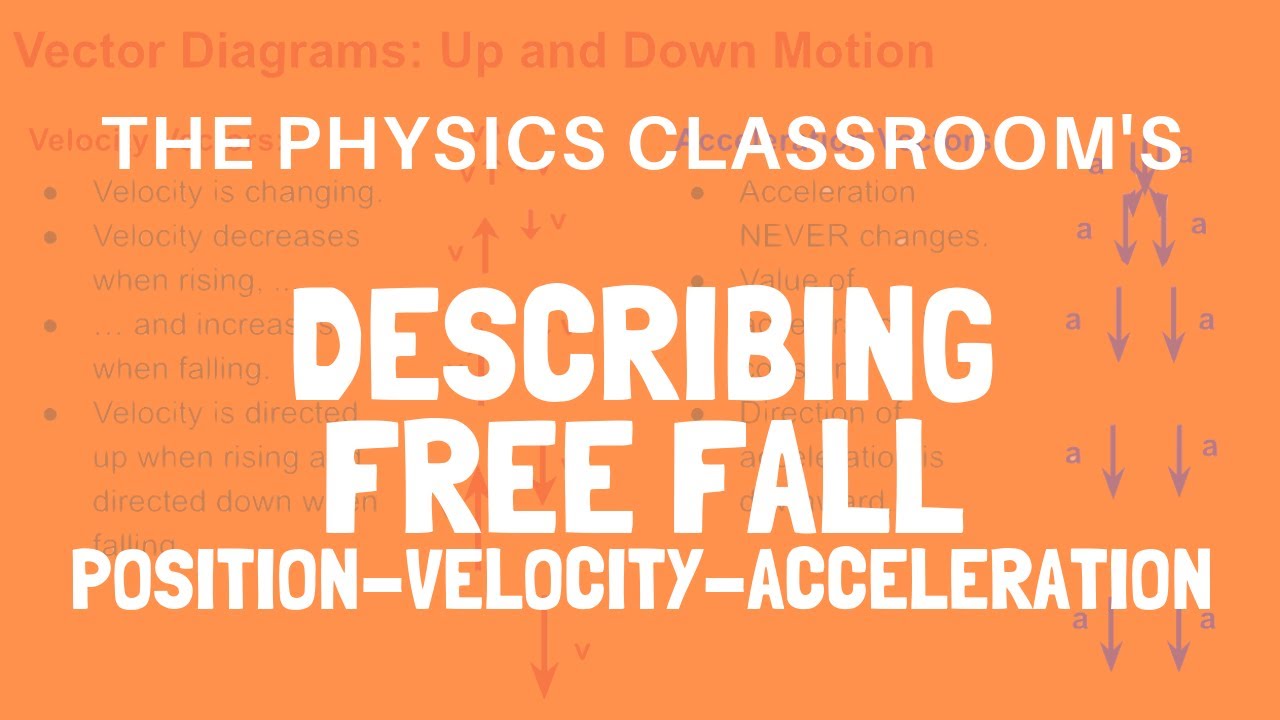GCSE Physics Revision "Acceleration 2"
Summary
TLDRThis educational video from 'Three Sighs' teaches viewers how to calculate the velocity of an object with constant acceleration and describes the acceleration of objects falling through fluids. It explains the formula for constant acceleration and provides sample problems involving cars, cyclists, and trains, demonstrating how to rearrange the equation for different scenarios. The video also introduces the concept of terminal velocity, explaining how objects fall towards Earth and reach a constant velocity due to air resistance, and emphasizes the importance of understanding this phenomenon for various objects in different fluids.
Takeaways
- 📚 The video is an educational tutorial on calculating velocity and acceleration for objects under constant acceleration.
- 🔍 The formula for acceleration is revisited: acceleration equals the change in velocity divided by time.
- 📐 An alternative equation is introduced for objects accelerating at a constant rate: final velocity squared minus initial velocity squared equals two times acceleration times distance.
- 📝 This equation will be provided in the exam, so students do not need to memorize it, but it might be more likely on the higher tier exam.
- 🚗 A sample problem is solved involving a car accelerating from 8 m/s to 12 m/s, with the distance traveled calculated to be 20 meters.
- 🚴 A challenge problem is presented for viewers to calculate the acceleration of a cyclist over a 50-meter distance, resulting in an acceleration of 0.16 m/s².
- 🚆 Another problem involves calculating the final velocity of a train after accelerating over a 50-meter distance, leading to a final velocity of 30 m/s.
- 🌍 The video discusses the acceleration of objects falling towards the Earth, with an initial acceleration due to gravity of approximately 9.8 m/s².
- 🪂 The concept of terminal velocity is introduced, where air resistance balances the force of gravity, leading to a constant velocity.
- 💨 Terminal velocity varies depending on the object and the force of friction it experiences, which is influenced by its shape.
- 📚 The video concludes with a note that there are many questions on acceleration in the provided revision book, accessible via a link.
Q & A
What is the formula for calculating acceleration?
-The formula for calculating acceleration is acceleration equals the change in velocity divided by the time (a = Δv/Δt).
What is the alternative equation for calculating the velocity of an object accelerating at a constant rate?
-The alternative equation is the final velocity squared minus the initial velocity squared equals two multiplied by the acceleration multiplied by the distance (v_f^2 - v_i^2 = 2ad).
Is it necessary to memorize the alternative equation for constant acceleration?
-No, you are given this equation in the exam, so you don't need to learn it by heart.
What is the expected initial acceleration of an object falling towards the Earth due to gravity?
-The initial acceleration of an object falling towards the Earth is approximately 9.8 meters per second squared.
What is the term used to describe the constant velocity an object reaches when falling through a fluid?
-The term is 'terminal velocity'.
What is the force that balances the force of gravity and causes an object to stop accelerating when falling through a fluid?
-The force that balances gravity and causes the object to stop accelerating is air resistance, or more generally, fluid resistance.
How does the shape of an object affect its terminal velocity?
-The shape of an object affects its terminal velocity by influencing the force of friction it experiences with the fluid it is falling through; objects with shapes that create more friction will have a lower terminal velocity.
In the sample question, what is the acceleration of the car if it goes from 8 m/s to 12 m/s?
-The acceleration of the car is 2 meters per second squared (2 m/s^2).
What is the acceleration of a cyclist who goes from 3 m/s to 5 m/s over a distance of 50 meters?
-The acceleration of the cyclist is 0.16 meters per second squared (0.16 m/s^2).
If a train accelerates from 20 m/s to a final velocity over a distance of 50 meters with an acceleration of 5 m/s^2, what is the final velocity?
-The final velocity of the train is 30 meters per second (30 m/s).
Where can I find more practice questions on acceleration?
-You can find more practice questions on acceleration in the revision world book, accessible through the provided link.
Outlines

هذا القسم متوفر فقط للمشتركين. يرجى الترقية للوصول إلى هذه الميزة.
قم بالترقية الآنMindmap

هذا القسم متوفر فقط للمشتركين. يرجى الترقية للوصول إلى هذه الميزة.
قم بالترقية الآنKeywords

هذا القسم متوفر فقط للمشتركين. يرجى الترقية للوصول إلى هذه الميزة.
قم بالترقية الآنHighlights

هذا القسم متوفر فقط للمشتركين. يرجى الترقية للوصول إلى هذه الميزة.
قم بالترقية الآنTranscripts

هذا القسم متوفر فقط للمشتركين. يرجى الترقية للوصول إلى هذه الميزة.
قم بالترقية الآنتصفح المزيد من مقاطع الفيديو ذات الصلة

GCSE Physics - Velocity Time Graphs #54

Walking Position, Velocity and Acceleration as a Function of Time Graphs

Describing Free Fall

Movimento Uniformemente Variado I (MUV) - Cinemática - Aula 7 - Prof. Boaro

GCSE Physics Revision "Acceleration"

Movimiento Rectilíneo Uniformemente Acelerado o Variado MRUA MRUV | Ejemplo 2
5.0 / 5 (0 votes)
